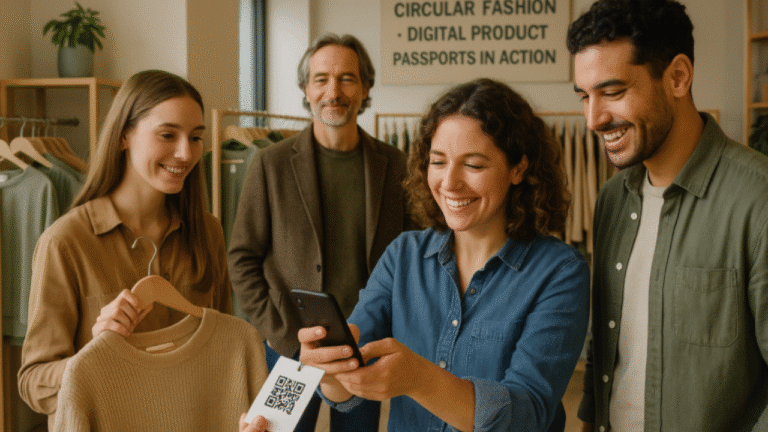From Compliance to Value Why Digital Product Passports Are Bigger Than Regulations

When I first started talking with fashion founders about Digital Product Passports (DPPs), the reaction was almost always the same: “We know they’re coming. We know we need them. But we’re already exhausted.”
And honestly, that’s fair.
Most small and mid-size brands don’t have a Chief Sustainability Officer. They don’t have endless budgets for audits. Many are still duct-taping supply chain data together in spreadsheets.
That’s why I’ve always said: start small. One product. One story. One step closer to trust.
But now something bigger is happening. As more brands take that first step, the conversation is shifting from compliance to value creation—and the data backs it up.
DPPs as a New Source of Business Value
A recent study from Bain & Company and eBay shows that a single product can generate as much value in resale, repairs, and services as in its first sale when a DPP is in place.
That opens the door to business models that go far beyond compliance:
- Authenticated resale programs
- Take-back and refurbishment services
- Care and repair offerings that extend product life
- Personalized engagement with your best customers
What once felt like a box to check for regulation suddenly becomes the foundation for growth.
One founder put it this way: “We started with just one best-selling tee, and now that same data is powering a repair program and a secondhand launch. We thought we were just checking a compliance box — turns out, it opened a new revenue stream.”
That’s the shift.
Price Doesn’t Equal Durability
Meanwhile, WRAP and the University of Leeds ran a durability study that challenges some long-held assumptions:
- Some of the most durable t-shirts cost under £15.
- Some of the least durable retailed for £395.
Price didn’t predict lifespan.
This matters because consumers can no longer rely on cost as a proxy for quality. They need proof—and that’s exactly where DPPs step in.
Imagine scanning a QR code and instantly seeing:
- Fiber composition
- Supply chain details
- Recommended care
- Expected durability
- Options for repair or resale
Instead of vague claims, customers get evidence they can trust and act on.
Key Insights at a Glance
- 2x Value: A product with a DPP can unlock resale and service value equal to its original sale price (Bain & Company + eBay).
- £15 vs. £395: Low-cost t-shirts outperformed luxury brands on durability (WRAP + University of Leeds).
- Consumer Shift: 65% of Gen Z shoppers say they scan QR codes for product details before purchase (McKinsey).
Building the Flywheel
So if you’ve created your first DPP, what comes next? Think flywheel, not finish line:
- Add one more product—don’t jump straight to your full catalog.
- Reuse your existing data—half the work is already done.
- Pull in one supplier to upload details directly.
- Share it publicly—every DPP you release builds customer trust.
Do this a few times, and suddenly you’re not scrambling. You’re building momentum. One product leads to another. The flywheel spins faster. Compliance becomes culture.
Why It Matters Right Now
Yes, EU regulations are coming quickly. But the bigger shift is already here:
Customers are scanning QR codes, comparing brands, and calling out greenwashing louder than ever. They’re not just hoping for transparency—they’re expecting it.
That’s why we built DigiProPass: to help brands move from scramble mode to story mode without adding five new systems.
- One DPP tells a product story.
- A dozen tell a brand culture.
And the brands that make this shift now won’t just survive new regulations. They’ll win the next generation of customer trust.
Final Thought
If you’re sitting on your first DPP and asking “what now?”, you’re not behind. You’re exactly where you should be.
The next step isn’t perfect. It’s just next.